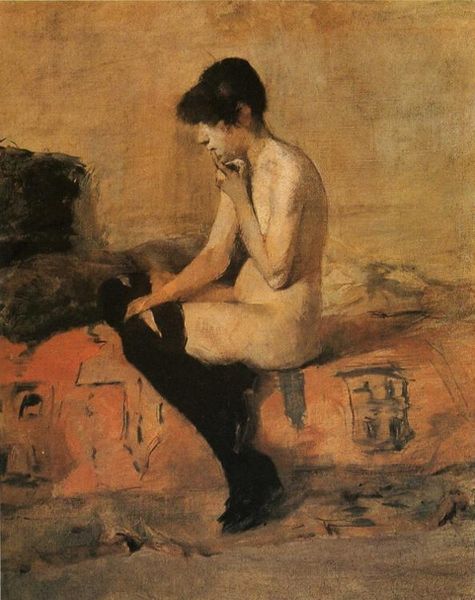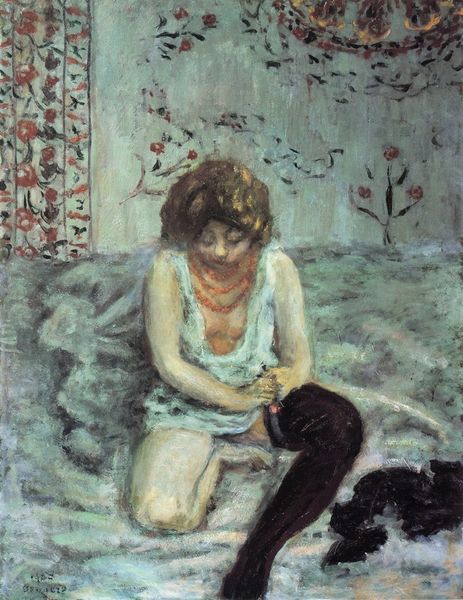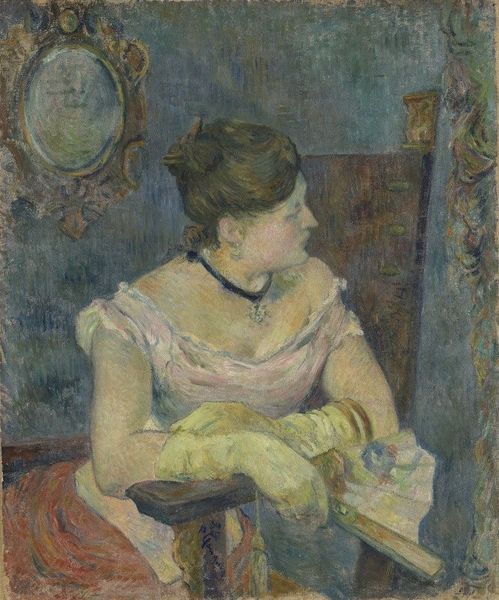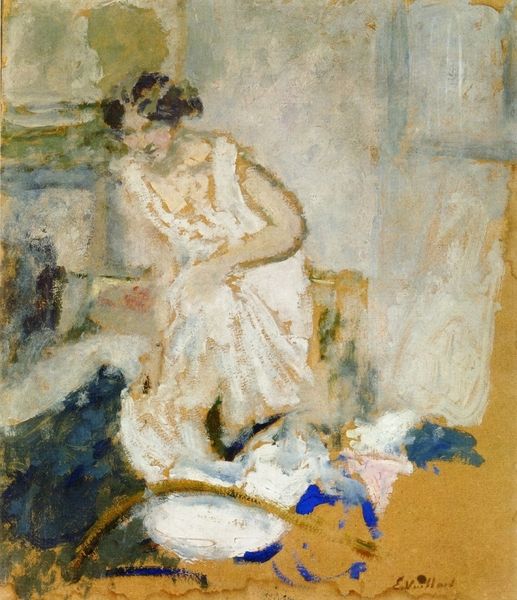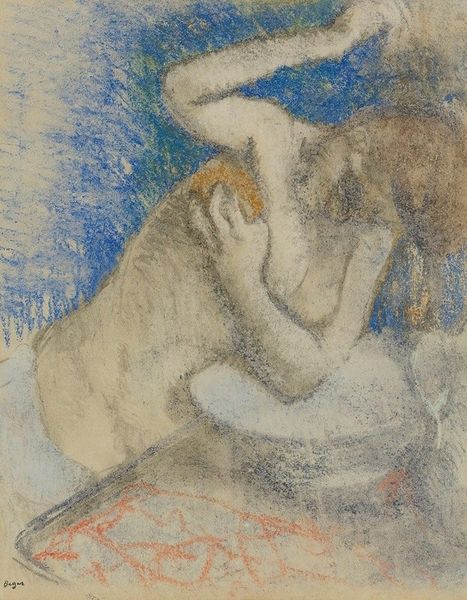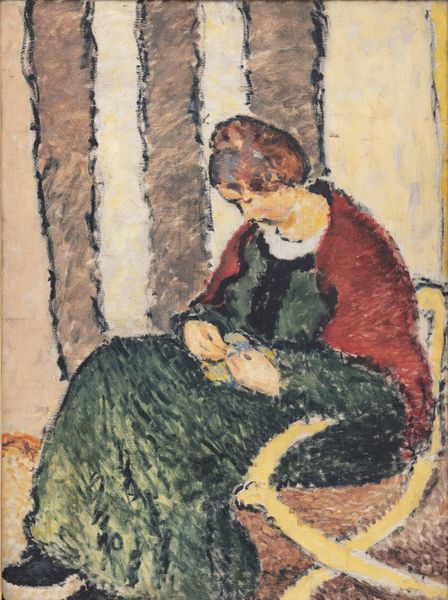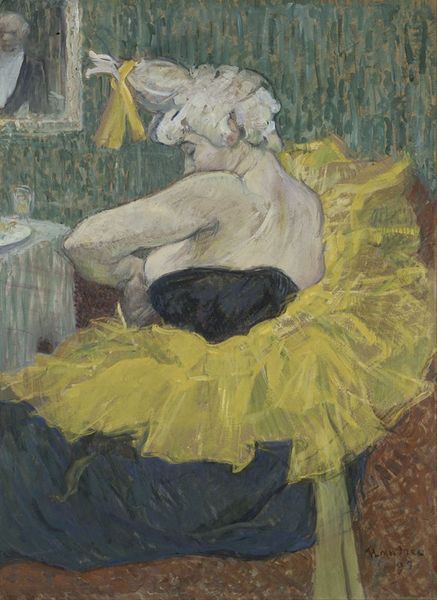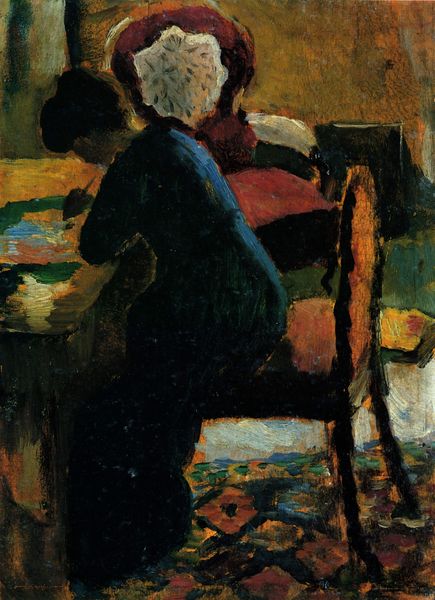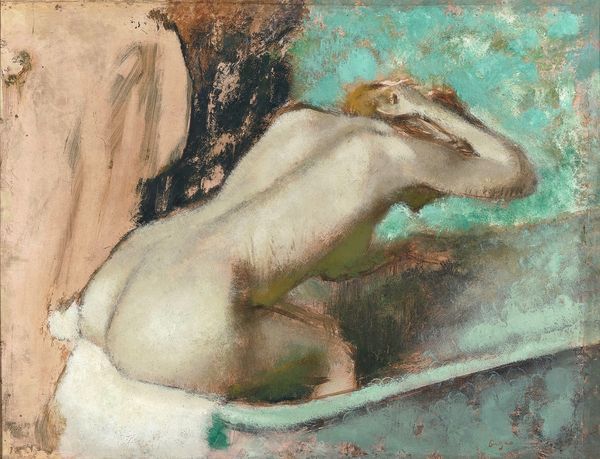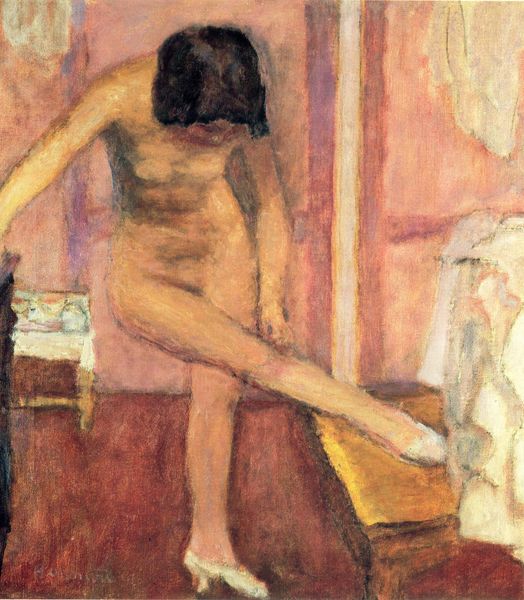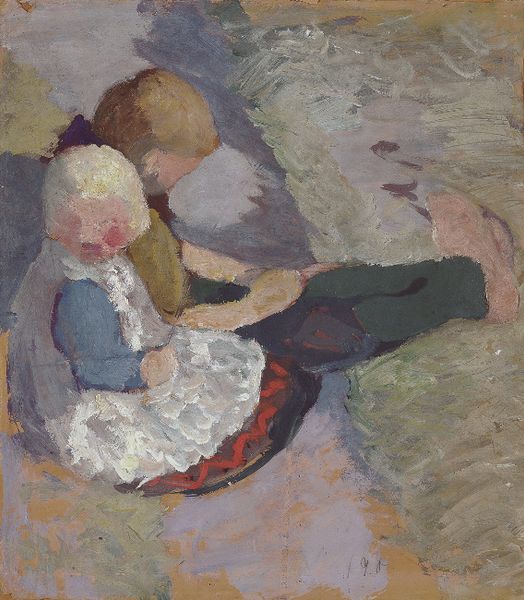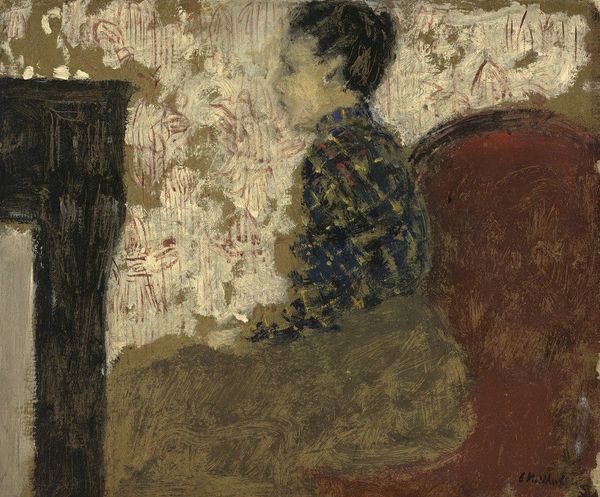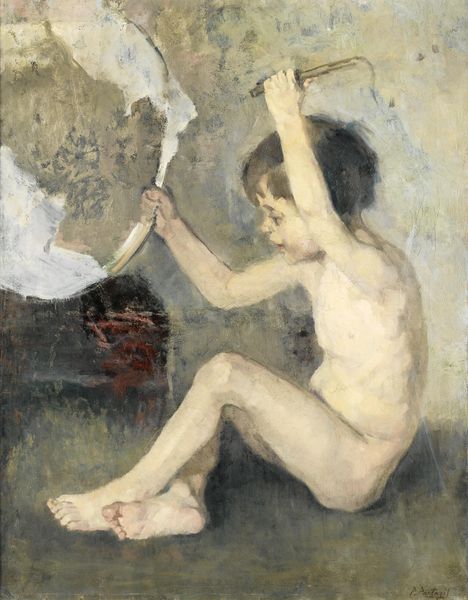
painting, oil-paint, impasto
#
portrait
#
painting
#
oil-paint
#
figuration
#
oil painting
#
impasto
#
intimism
#
modernism
Dimensions: 69 cm (height) x 72 cm (width) (Netto), 80.3 cm (height) x 83 cm (width) (Brutto)
Curator: I'm struck by the stillness, almost a solemnity, in Harald Giersing's "A Lady Dressing" from 1907. Editor: The materiality itself speaks first. Look at the impasto of the oil paint; it's tactile, almost like rough plaster. You can practically trace the artist's gestures. Curator: Absolutely. Beyond the technique, I'm curious about the narrative suggested. The woman’s pose, head bowed, evokes contemplation. Do you think it alludes to societal constraints on women at the turn of the century? Editor: It could. But consider also the production of images of women in that era; their bodies were currency, exchanged within social and economic systems. How was Giersing complicit in this, or resisting it? The visible brushstrokes feel less polished than some contemporary works. Was it more rapidly produced for a different market, or for private display? Curator: That's a good point about the labor involved, the art market, and its influence. But the subject matter can still reveal insights into how women perceived themselves, and the private moments before they stepped into the public sphere. What about the colors and composition, any emotional read for you there? Editor: Yes. It's predominantly a muted palette – the yellows and greens give it an interior quality, perhaps highlighting the everyday actions so many take for granted. What did dressmaking, a significant social activity at this time, and a key part of women's self presentation mean for women’s ability to exert autonomy, express individuality, conform to beauty standards? And how does all of this relate to our 21st-century understanding? Curator: It encourages us to consider, as you say, the connections across time. I see an enduring representation of introspection and perhaps a quiet resistance to external pressures. Editor: And I think of how artistic choices about material and execution shaped the cultural understanding of feminine expression then, and what that still can mean now. Curator: Precisely, it’s a convergence of introspection and a testament to artistic choice, which, hopefully, offers a fresh insight into a timeless theme. Editor: I think considering its social, material and labour background it reminds me to consider more than the surface of painting.
Comments
No comments
Be the first to comment and join the conversation on the ultimate creative platform.
